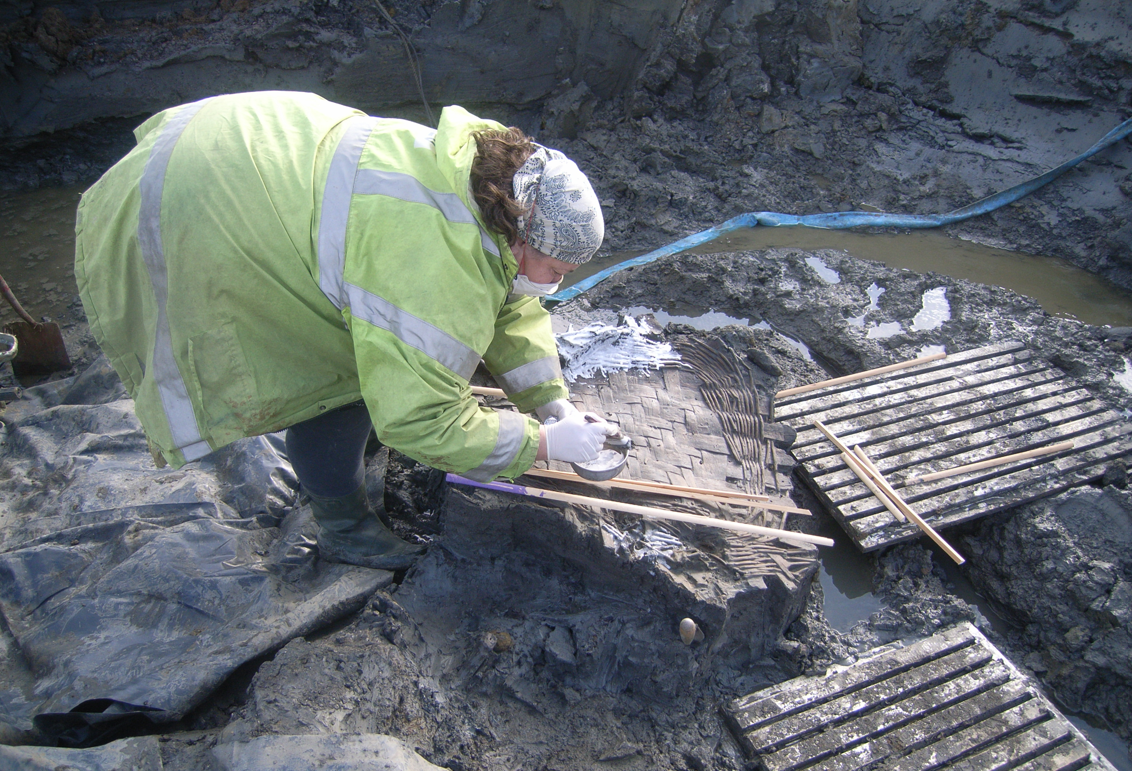An archaeological dig has unearthed an intact chicken egg, still containing its yolk and albumen, from a wishing well that dates back to the age of the Roman Empire.
The speckled egg, which is about 1,700 years old, was recently discovered by Oxford Archaeology during excavations near the town of Aylesbury in Buckinghamshire, UK.
It was found alongside other eggs inside a woven basket in an area that is believed to have once been a Roman wishing well. Unfortunately, the accompanying eggs had cracked open during the excavation, releasing an “incredibly sulphurous smell” into the face of unsuspecting archaeologists.
One egg, however, remained intact. Amazed by its remarkable condition, the team carried out a micro-CT scan on the specimen. This revealed that the egg stilled contained an air sac filled with a gooey semi-viscous liquid, thought to be its yolk and albumen.
Alongside the cache of eggs, the fieldwork near Aylesbury revealed a woven basket, pottery vessels, coins, leather shoes, and animal bones.

An archaeologist at the site near Aylesbury unearths the egg-citing discovery.
Image courtesy of Oxford Archaeology
It’s unbelievably rare for an egg to remain intact for 17 centuries – after all, some eggs fail to make it back from the supermarket in one piece.
Given its age and condition, the researchers believe the Aylesbury egg is a first-of-its-kind discovery from Roman Britain and might even be the oldest unintentionally preserved bird’s egg in the world.
“The egg is, we believe, unique. It is the oldest surviving example of an inadvertently preserved avian egg found in the UK and we do not know of any equivalent globally,” Douglas Russell, egg aficionado and senior curator of birds at London’s Natural History Museum where the specimen has been sent, said in a statement sent to IFLScience.
“There are older eggs that were deliberately preserved. For example, the Natural History Museum holds a series of mummified Sacred Ibis eggs from ancient Egypt. Both the Egyptian mummified eggs and these Roman eggs were offerings to gods,” Russell explained.
“What is fascinating and sets these Roman eggs apart is that, as far as we can tell, they are relatively fresh and unaltered when buried and it is simply that the soil conditions unintentionally preserved them,“ he added.
Acting as a symbol of life and rebirth, Romans often used eggs in burials and as offerings to the gods. Perhaps this cluster of eggs was one of these gifts to a world beyond ours (or maybe someone misplaced their shopping basket on the way back from the market).
If old eggs are your thing, which presumably they are if you’re still here, there are some exceptional examples elsewhere in the world.
Among the most mind-blowing, scientists discovered a 66- to 72-million-year-old egg in southern China that contained a fully articulated dinosaur embryo. Measuring 27 centimeters (10.6 inches) long, it belonged to a group of feathered, toothless theropods known as oviraptorosaurs, which are often seen as a link between dinosaurs and modern birds.
Source Link: 1,700-Year-Old Uncracked Egg With Yolk Still Inside Is Astonishing Roman Find